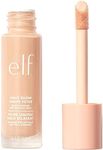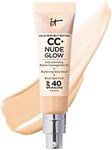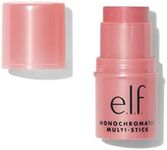Buying Guide for the Best Makeup For Mature Skins
Choosing makeup for mature skin is all about enhancing your natural beauty while addressing the unique needs that come with aging. As skin matures, it often becomes drier, thinner, and may show fine lines or age spots. The right makeup can help you achieve a fresh, radiant look without settling into lines or emphasizing texture. When shopping, focus on products that offer hydration, a natural finish, and gentle formulas. Understanding the key features of makeup for mature skin will help you select products that flatter and care for your complexion.Hydration and Moisturizing PropertiesHydration is crucial for mature skin because it tends to lose moisture more easily, which can make makeup look cakey or settle into fine lines. Look for products labeled as hydrating, moisturizing, or containing ingredients like hyaluronic acid, glycerin, or squalane. These ingredients help keep the skin plump and smooth. If your skin feels tight or looks flaky, opt for richer, creamier formulas. If you have combination skin, a lightweight hydrating product may be enough. Always match the level of hydration to how dry your skin feels day-to-day.
Coverage LevelCoverage refers to how much a makeup product can conceal imperfections or even out skin tone. For mature skin, light to medium coverage is often best because it looks more natural and is less likely to settle into lines. Sheer coverage is great if you want a barely-there look and have few spots to cover. Medium coverage works well for those who want to even out tone but still look natural. Full coverage can be used for special occasions or if you have significant discoloration, but it should be applied sparingly and blended well to avoid a heavy look.
Finish (Matte, Dewy, Satin)The finish of a makeup product describes how it looks on the skin—matte is flat with no shine, dewy is radiant and glowing, and satin is somewhere in between. Mature skin often looks best with a dewy or satin finish, as these can make the skin appear more youthful and hydrated. Matte finishes can sometimes emphasize dryness or texture, so they are usually less flattering unless you have oily areas. Choose a finish that complements your skin type and the look you want: dewy for a fresh glow, satin for a soft natural look, and matte only if you need to control shine.
Texture and FormulaTexture refers to how thick or thin a product feels and how it applies to the skin. Cream and liquid formulas are generally better for mature skin because they blend easily and don’t settle into lines as much as powders. Powders can sometimes make the skin look dry or accentuate wrinkles. If you prefer powder, look for finely milled, hydrating versions. For foundation, blush, and eyeshadow, creamy textures are usually the most flattering and comfortable for mature skin.
Ingredients and SensitivityMature skin can be more sensitive, so it’s important to check the ingredient list for potential irritants like alcohol, fragrance, or harsh chemicals. Look for products labeled as hypoallergenic, dermatologist-tested, or suitable for sensitive skin. Ingredients like antioxidants, peptides, and vitamins can also provide added skin benefits. If you have a history of allergies or sensitivities, always patch test new products before applying them to your face.
Ease of ApplicationAs dexterity can change with age, it’s helpful to choose makeup that is easy to apply and blend. Products with creamy textures, stick formats, or built-in applicators can make the process simpler and more comfortable. If you find it difficult to use brushes or sponges, look for products that can be applied with fingers. The right application method can make a big difference in how natural and flattering your makeup looks.



















